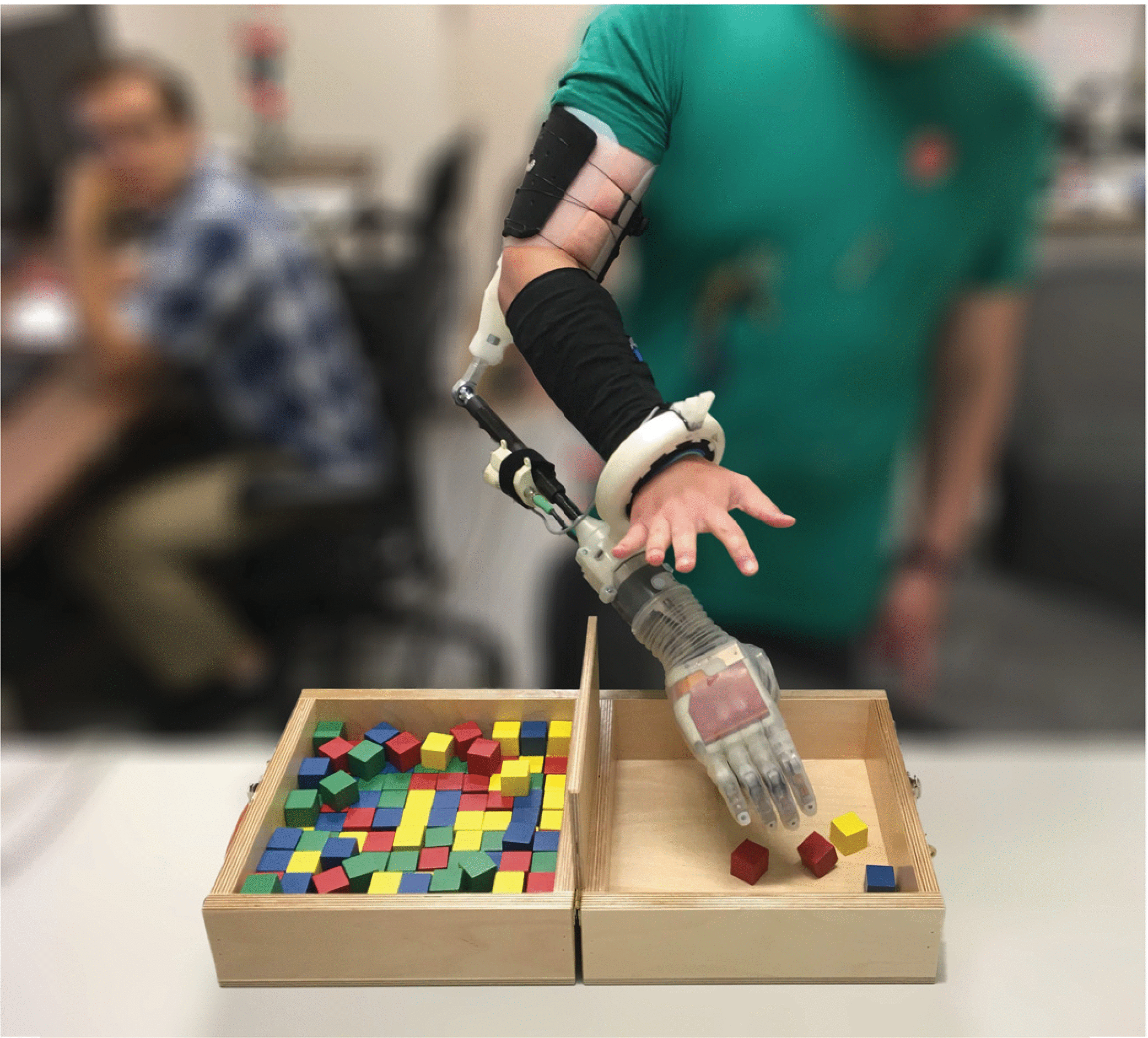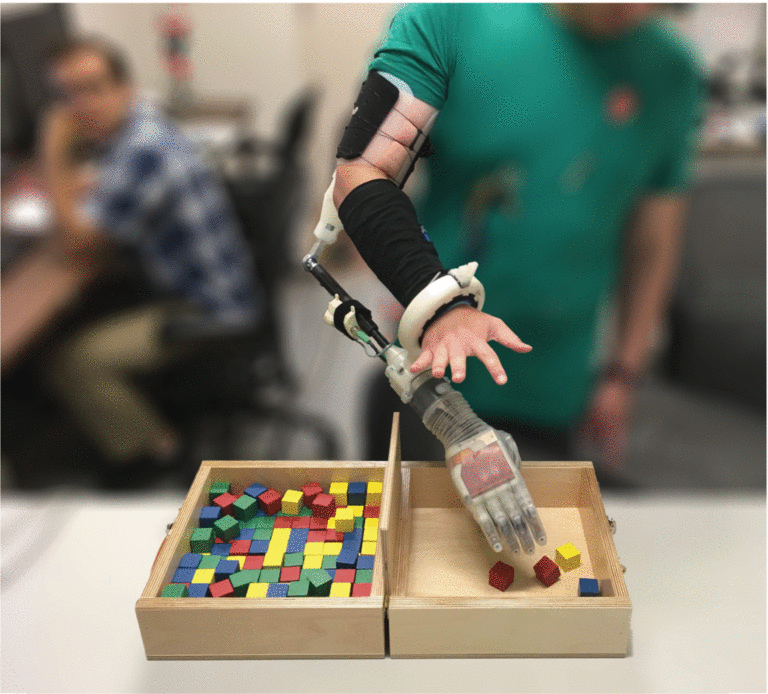
Bypass sockets allow researchers to perform tests of prosthetic systems from the prosthetic user’s perspective. We designed a modular upper-limb bypass socket with 3D-printed components that can be easily modified for use with a variety of terminal devices. Our bypass socket preserves access to forearm musculature and the hand, which are necessary for surface electromyography and to provide substituted sensory feedback. Our bypass socket allows a sufficient range of motion to complete tasks in the frontal working area, as measured on non-amputee participants. We examined the performance of non-amputee participants using the bypass socket on the original and modified Box and Block Tests. Participants moved 11.3 ± 2.7 and 11.7 ± 2.4 blocks in the original and modified Box and Block Tests (mean ± SD), respectively, within the range of reported scores using amputee participants. Range of motion for users wearing the bypass socket meets or exceeds most reported range of motion requirements for activities of daily living. The bypass socket was originally designed with a freely rotating wrist; we found that adding elastic resistance to user wrist rotation while wearing the bypass socket had no significant effect on motor decode performance. We have open-sourced the design files and an assembly manual for the bypass socket. We anticipate that the bypass socket will be a useful tool to evaluate and develop sensorized myoelectric prosthesis technology.

